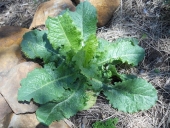




permaculture wiki: www.permies.com/permaculture




It's time to get positive about negative thinking  -Art Donnelly
-Art Donnelly












Pastured pork and beef on Vashon Island, WA.
 1
1












 and he talks about raising cattles without hay. I read the book about a year ago, but as far as I remember he was raising cattles without or with very little hay in Yukon. He mentionned something about issues with cattles eating through a lot of snow, but it did not seem to be an issue for him given the cold and dry climate of western Canada.
and he talks about raising cattles without hay. I read the book about a year ago, but as far as I remember he was raising cattles without or with very little hay in Yukon. He mentionned something about issues with cattles eating through a lot of snow, but it did not seem to be an issue for him given the cold and dry climate of western Canada.
 1
1




Sheryl









"Instead of Pay It Forward I prefer Plant It Forward" ~Howard Story / "God has cared for these trees, saved them from drought, disease, avalanches, and a thousand tempests and floods. But he cannot save them from fools." ~John Muir
My Project Page




Marissa Little wrote:It's far less time to toss some hay into a dry paddock than to do rotational grazing. That's nothing about money or 'resources' as a general term. But to do this type of management will most certainly take more time than to feed supplemental.




'Science is the father of knowledge, but opinion breeds ignorance.' - Hippocrates




Wild Edible & Medicinal Plant classes, & DVDs
Live in peace, walk in beauty, love one another.




Joe's Garden Journal Blog
wholeviewfarm.blogspot.com




the birds get maximum protein from the fly larvae












John Kitsteiner wrote:I know many people do this around the world in the right climate, but I haven't heard of anyone acutally doing this in the U.S. with cattle, sheep, goats, pigs, or chickens.
This would not be for a commercial venture, but to provide my family with good quality food.
Is this possible? I plan on living in the Pacific Northwest in a few years, and I am trying to develop the conceptual framework now, before I am there.
What would it take?
Thanks!
Doc K
Shenanigans of the sheep and wooly sort.. And many more.. https://www.instagram.com/girlwalkswithgoats/
Papa always says, "Don't go away angry... just go away."








Things recompose in compost and we live in a food web.
Decomposing the food chain.

| I agree. Here's the link: http://stoves2.com |







